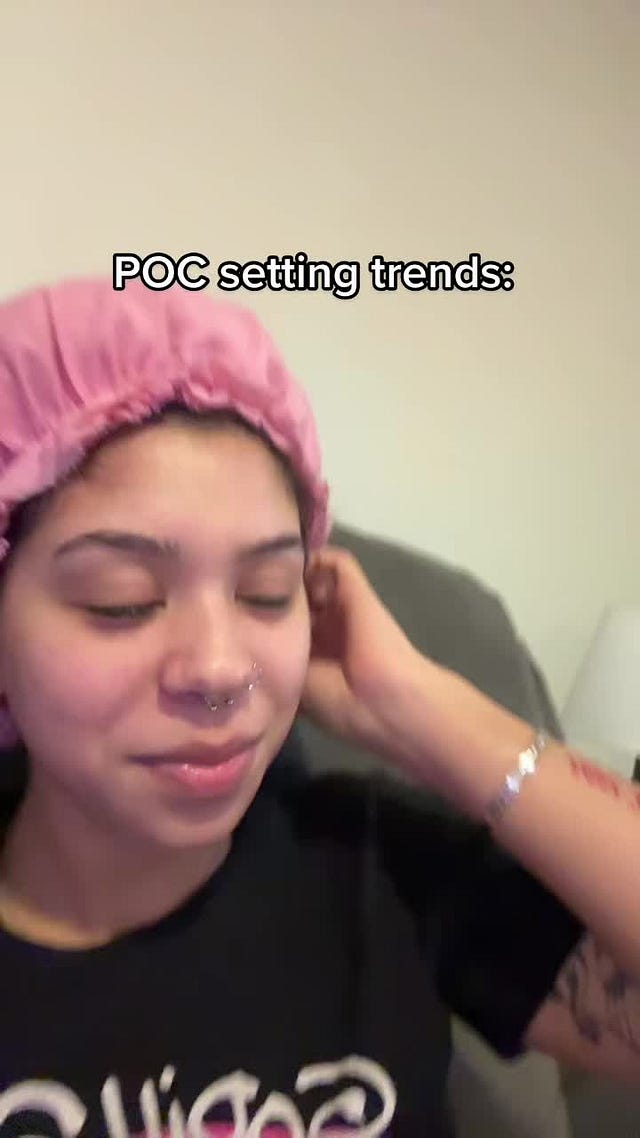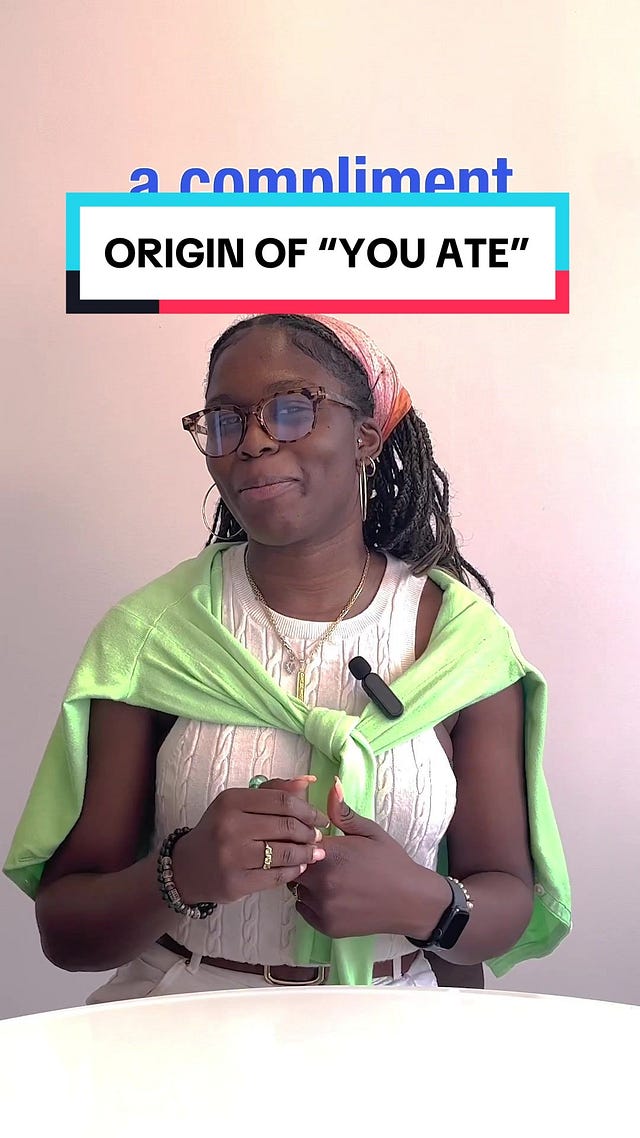Silence, Brand! Deep Dive: aave is not just gen z slang
🦀 A Silence, Brand! Deep Dive by Dejaih Smith
Imagine a day where the Black community collectively logged off the internet.
Would brands still have a reservoir of cultural expressions to infuse into their marketing campaigns?
The pervasive influence of African American Vernacular English (AAVE) in today's digital communication is undeniable.
Terms like:
who is this DIVA
yk what, hell yeah
bussin’
he’s a good man, Savannah
you did your big one
and ho is you…
–all sparked by #BlackTok, have seamlessly integrated into mainstream slang.
This phenomenon raises a pressing question:
Is Gen Z lingo merely a diluted version of AAVE?
AAVE, or Ebonics, is a rich linguistic system with its own unique grammar, vocabulary, and pronunciation patterns. It has been a cornerstone of African American culture, reflecting resilience, creativity, and a distinct identity. Over time, elements of AAVE have transcended their original contexts, permeating various facets of pop culture, especially through music, film, and social media.
In recent years, the rise of social media platforms has accelerated the spread of AAVE-derived expressions.
Influencers, celebrities, and even brands often adopt these terms, propelling them into the mainstream. However, as these expressions become widespread, their origins are frequently obscured, leading to a form of cultural appropriation where the linguistic contributions of Black communities are unacknowledged.
 Tiktok failed to load.
Tiktok failed to load.Enable 3rd party cookies or use another browser
The Sociolinguistic Roots of AAVE
To understand the depth of this appropriation, it's essential to delve into the origins of AAVE. Emerging from the creolization of English and various African languages during the era of slavery, AAVE developed as a means for enslaved Africans to communicate, often in ways that were unintelligible to their oppressors. Over centuries, it evolved into a robust dialect, encapsulating the experiences, struggles, and triumphs of African Americans.
Linguists have extensively studied AAVE, highlighting its systematic nature and grammatical complexity. Features such as the use of double negatives, the omission of the copula (e.g., "She goin’" instead of "She is going"), and unique verb aspects are not random errors but rule-governed structures that convey nuanced meanings. Despite this, AAVE has often been stigmatized, labeled as "broken" or "incorrect" English, reflecting broader societal prejudices.
There is a thin line between organic language fusion and cultural appropriation. What may seem like harmless linguistic borrowing often erases the history and significance behind these words.
 Tiktok failed to load.
Tiktok failed to load.Enable 3rd party cookies or use another browser
Think Before You Take: The Cost of Appropriation in Marketing
In the realm of marketing, the uncredited adoption of AAVE can have significant repercussions. Brands eager to appear trendy or relatable may incorporate AAVE terms into their campaigns without understanding their cultural origin or significance. This not only dilutes the original meaning of these expressions but also risks alienating the very communities from which they originate.

A pertinent example is the use of the term "bae," an AAVE term of endearment that gained mainstream popularity. Several brands adopted this term in their marketing slogans, often in contexts that stripped it of its cultural nuance. Such practices can come across as inauthentic and exploitative, leading to public backlash and calls for cultural sensitivity.
Moreover, the commodification of AAVE in marketing contributes to a broader pattern of cultural appropriation, where elements of marginalized cultures are used for profit without acknowledgment or compensation. This perpetuates systemic inequalities, as the cultural capital of Black communities is extracted while the communities themselves remain marginalized.
Black consumers' economic power is substantial and growing. They are leading in media engagement, averaging more hours of media consumption, and are on track to spend $2.1 trillion by 2026. Despite their immense influence, a sociolinguistic study back in 1994 found that only 14% of sampled television ads featuring Black actors utilized grammatical features of AAVE, and just 34% incorporated AAVE phonological features. If updated, just imagine what those numbers would be today on social media alone. These statistics highlight the paradox where Black culture drives economic and media trends yet remains underrepresented or misrepresented in advertising.
Black audiences are digital trendsetters. They are the ones that encourage broader audiences to like, comment, subscribe (and imitate).
Elevation Without Exploitation: A Framework for Cultural Authenticity
To navigate the fine line between cultural appreciation and appropriation, brands must adopt a framework that prioritizes authenticity and respect. This involves:
Acknowledging the origins of the expressions. Ensure your marketing strategies do not perpetuate stereotypes or trivialize cultural practices.
Engaging directly with Black creators and communities. By collaborating with individuals who are rooted in the culture, brands can ensure that their campaigns are both authentic and respectful. This not only lends credibility to the marketing efforts but also provides a platform for Black voices, contributing to greater diversity and inclusion in the media landscape.
Investing in cultural competency training for their marketing teams. Understanding the historical and cultural contexts of the expressions they wish to use can prevent missteps and foster more meaningful connections with diverse audiences.
“Reaching Black consumers may not be a challenge—but connecting with us can be. Black consumers are leaning into platforms that emphasize conversation and create a sense of connection. To win with this community who wields $2 trillion in buying power, brands must prioritize engagement strategies that center diverse Black experiences and cultural nuances.”
Charlene Polite Corley, Vice President of Diverse Insights & Partnerships at Nielsen
Where Do We Go From Here?
The infusion of AAVE into mainstream language, particularly among Gen Z, underscores the profound impact of Black culture on contemporary communication. However, this influence comes with a responsibility to honor and respect its origins. Brands and individuals alike must be mindful of the fine line between appreciation and appropriation, striving to celebrate Black linguistic innovation without exploiting it.
Black consumers have long been trendsetters and tastemakers, their choices creating a halo effect that resonates across demographics. Their relentless pursuit of innovation and cultural expression has enriched the cultural tapestry, offering a wellspring of creativity that benefits society at large.
As we continue to navigate the evolving landscape of language and culture, let us commit to practices that elevate without exploiting, ensuring that the contributions of Black communities are recognized, respected, and celebrated.
For up to date insights on how to connect with Black audiences, check out Nielsen’s 2025 Diverse Intelligence Series: Engaging Black audiences report.
Silence, Brand! is an internet culture and marketing newsletter compiled by unhinged brand marketing professionals.






